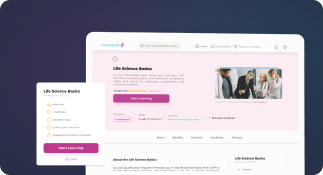Drug Regulatory Affairs
Definition
Drug Regulatory Affairs refers to the field within the pharmaceutical and life sciences industry that ensures compliance with all legal and scientific requirements governing the development, approval, manufacturing, and marketing of pharmaceutical products. It plays a critical role in ensuring that medicines are safe, effective, and of high quality before they reach the public.
Detailed Explanation
Drug Regulatory Affairs (DRA), also known as pharmaceutical regulatory affairs, is a specialized discipline that bridges the gap between pharmaceutical companies and regulatory authorities such as the U.S. Food and Drug Administration (FDA), European Medicines Agency (EMA), and other global health agencies. Professionals in this field manage the submission, approval, and maintenance of regulatory documentation throughout a drug’s lifecycle.
Purpose and Importance
The primary goal of drug regulatory affairs is to ensure that pharmaceutical products meet all safety, efficacy, and quality standards set by regulatory authorities. This is essential for public health and for maintaining the credibility of pharmaceutical companies. Regulatory affairs professionals work closely with R&D, clinical, and manufacturing teams to compile and submit dossiers that support new drug applications (NDAs), marketing authorization applications (MAAs), and other regulatory submissions.
Key Responsibilities in Drug Regulatory Affairs
- Preparing and submitting Investigational New Drug (IND) applications and NDAs to the FDA or equivalent bodies.
- Managing product labeling, advertising, and promotional material to comply with regulations.
- Ensuring that clinical trials are conducted in compliance with Good Clinical Practice (GCP) and local regulations.
- Monitoring regulatory changes and updating internal teams on implications.
- Handling post-marketing surveillance and pharmacovigilance reporting requirements.
Global Regulatory Landscape
Drug regulatory affairs is a global discipline, with each country or region having its own regulatory authority and requirements. For example:
- FDA (United States): Oversees drug approvals, labeling, and post-market safety.
- EMA (European Union): Centralized procedure for drug approval across EU member states.
- PMDA (Japan): Works with the Ministry of Health, Labour and Welfare (MHLW) for regulatory approvals.
- TGA (Australia): Regulates therapeutic goods including medicines and medical devices.
Examples of Regulatory Submissions
Common types of regulatory submissions in pharmaceutical drug regulatory affairs include:
- Investigational New Drug (IND): Required before starting clinical trials in humans in the U.S.
- New Drug Application (NDA): Submitted to obtain marketing approval for a new drug in the U.S.
- Biologics License Application (BLA): Required for biological products in the U.S.
- Marketing Authorization Application (MAA): Used in the EU to request approval to market a drug.
- Common Technical Document (CTD): A harmonized format used for regulatory submissions across ICH regions.
Career Opportunities in Drug Regulatory Affairs
Professionals in this field typically hold degrees in pharmacy, life sciences, or regulatory science. Career roles include:
- Regulatory Affairs Specialist
- Regulatory Affairs Manager
- Regulatory Affairs Director
- Regulatory Intelligence Analyst
These roles exist in pharmaceutical companies, contract research organizations (CROs), biotechnology firms, and regulatory consulting agencies.
Challenges and Trends
Modern regulatory affairs face challenges such as:
- Keeping up with rapidly changing global regulations.
- Managing accelerated approval pathways (e.g., Fast Track, Breakthrough Therapy).
- Integrating digital health technologies and real-world evidence into regulatory submissions.
- Ensuring compliance with data integrity and cybersecurity standards.
Emerging trends include the use of artificial intelligence in regulatory operations, increased emphasis on global harmonization, and patient-centric regulatory frameworks.



